- Home
- Неизвестный
Granta 133 Page 6
Granta 133 Read online
Page 6
Then, suddenly, because it was the same every year, an even larger crowd of people rushed in like a huge wave that would grow more and more threatening, more and more abstract, the higher it rose. You’d expect unwavering, nearly naked men and women with their feet spread for perfect balance to be riding it on surfboards until the enormous wave crested (which would have to be at the ceiling beams) and propelled everyone in her direction all at once, like so many grains of sand, toward where she sat like Neptune without a sceptre (without even a drink, publically) on a throne propped up with the Yellow Pages and hardback dictionaries you couldn’t give away anymore. She was their destination, no different than arriving at the Pyramids, hardly distinguishable (except for her age) from the Fountain of Youth.
She crossed her legs. Her calves were gnarled varicose veins of seaweed. She’d started out in life the proud sandcastle fortress; she’d become the unlovely sun-bleached towel; she’d been so, so long ago the little shoe left behind; her finger was now the remaining claw of the crab that had already been pecked apart by seagulls.
‘Merry Christmas, merry Christmas!’
An echo, or just a lot of identical thoughts? Impossible to tell, underwater, when you’d lost your sense of hearing and the sound inside your head was a roar.
Was it true that if you went under for the third time, that was it? Were only bird feathers – there! What about bird feathers? – didn’t they repel water and float?
But too many garments . . . too much material . . . like shoes, they’d drag you down.
The word money popped up like a bit of the ocean’s detritus riding in on a wave, but her lips formed the words ‘Merry Christmas’.
NATURE MORTE
Helge Skodvin
Introduction by Audrey Niffenegger
The first piece of taxidermy I ever bought was an overstuffed toad. It cost twenty-five cents and it was somewhat broken; wires protruded where its hands should have been. I bought it on a whim, at a garage sale. Thirty years later, I still have it sitting on my desk, staring at me with its dull fake eyes.
The room where I write is full of taxidermy and books. They inhabit the shelves together: books on natural history, travel, antique medical textbooks and dictionaries make a habitat for a squirrel, a raccoon, a fox, various birds, a small rabbit, a rat from New York and a Chinese cat skeleton someone put together with a glue gun.
I feel sorry for each of these animals. They are banged up, dented, incompetently stuffed. They are not themselves.
I write at night, and the taxidermied animals ought to make eerie companions, but I hardly notice them. They have been here for years and each one has its place, incongruous but familiar. They only seem strange when someone new visits and sees them with fresh eyes.
In May 2015, Helge Skodvin took photographs of the World Taxidermy and Fish Carving Championships in Springfield, Missouri, a trade show for taxidermists. There are prizes, including a Lifetime Achievement Award. It is an event that offers many opportunities to see strangeness even in its most accomplished presentations, but Skodvin has turned his camera toward the casual awkwardness and unintentional surrealism that surround even the slickest showmanship. These photographs have the deadpan vibe of suburbia, nothing violent or unpleasant is happening and yet each photograph radiates melancholy. Helge Skodvin has caught the absurd menace and pity of the whole shebang. He confronts us with our hubris and our appetite for kitsch. Taxidermy is worrisome. Each kindly deer head, snarling leopard and elephant-foot umbrella stand is a place where our human contradictions converge. A piece of taxidermy was once an animal and that animal had memories and preferences. Once it has become a piece of taxidermy, it has nothing. The former animal is now an object. But this object causes us pain, because we know that stuffing it is profoundly incorrect. Even the most artful taxidermy is uncanny because the animal is out of context. Whether it is in a convention center or my bookcase, it looks wrong. We are thrilled and embarrassed to see the animal captured so far from its natural state.
Humans often don’t want to let go of things and so we have developed techniques for keeping them always with us. Pickled specimens in jars, flowers pressed between the pages of books, snippets of hair in lockets, bronzed baby shoes, high-school yearbooks, cryonically preserved heads, vinyl records, frozen peas in the back of the freezer – we imagine that we might need these things later, in a week, a month, a century; we take comfort in the knowledge that we have preserved the past, it is not lost to us.
Taxidermy and photography share certain powers: they can stop time, simulate nature, grant us proximity to beings that want nothing to do with us. We can gaze at Helge Skodvin’s photographs for as long as we like. He brings us to the edges of the action, where the illusion is thinnest, where the banal and the sublime are thrown together for a moment that extends into forever on the page.
Nature has secrets. We imagine that we can discover them if we look carefully enough, if we can take nature apart and reassemble it. We want to be close to nature and yet we are becoming more unnatural with every passing day. We are apart from nature and taxidermy is a reminder that time is passing and no matter how convincingly we reassemble the form, the ghost in the machine is gone for good. No matter how lifelike art might be, it cannot be alive. Taxidermy can be terribly moving, but mostly it is pathetic and even the pathetic fallacy is not enough to make it seem okay.
These are uncomfortable photographs. Helge Skodvin presents us to ourselves as destroyers and preservers, busily creating facsimiles of life from death. I suspect that the best thing to do might be to take all the taxidermy and burn it, sending the animals back to nature in the form of carbon and letting the past recede into the past. But for now these photographs preserve the indignities we visit upon nature, one elephant-foot umbrella stand at a time.
THE LEGACY
Fred Pearce
Not many people visit the Grey Croft stone circle in western Cumbria. The ten chest-high stones between the mountains of the Lake District and the waters of the Irish Sea have been there for five thousand years. And down the hill, across a field and over a small stream, lies Britain’s largest industrial site, the Sellafield nuclear complex.
Sellafield is Britain’s nuclear nightmare. It harbours the lethal remains of bomb-making, the accumulated radioactive waste from sixty years of nuclear electricity generation and the world’s largest stockpile of plutonium. There is no other place on earth containing so much radioactive material in so confined an area.
I visited the stones first, before walking the double line of high razor-wire fences that surround the works. I was soon stopped by a squad car of the Civil Nuclear Constabulary, a dedicated armed force protecting nuclear installations. Nobody is taking any chances. The nuclear waste of Sellafield will remain dangerous for far longer than the Grey Croft stones have been here. The open-air ponds of radioactive sludge and corroded nuclear fuel, the tanks of hot liquid waste from nuclear reprocessing, the potentially explosive remains inside the sealed sarcophagus from a fire in 1957: all have radioactive half-lives measured in tens of thousands of years. A terrorist attack, earthquake or cataclysmic accident at Sellafield could make a large area of northern England uninhabitable.
Having satisfied the nuclear police that I posed no threat, I walked down a quiet country lane to Ponsonby Church, part of an estate that William the Conqueror gave to the Ponsonby family over nine hundred years ago. Lambs cavorted round the churchyard in the bright sun, as they must have done every spring, for centuries. But the new landlord here is the Nuclear Decommissioning Authority, and the manor house nearby is occupied by nuclear-waste engineers. Inside the church, a notice warns that if the Sellafield siren blows, nobody should leave. The doors should be shut and news sought by tuning into a radio.
I had travelled here to reacquaint myself with the radiology and psychogeography of Sellafield and its western Cumbrian hinterland. Sellafield and I go back a long way. When I worked as an editor at New Scientist in the early 1980s, it
was still known as Windscale, and its leaks, accidents and scandals made regular copy. Since then, the headlines have dried up. You may think that this is because the nuclear beast has been tamed – that new management methods and health and safety rules, brought in to replace Cold War paranoia and hastily invented engineering, might have made Cumbria safe – but Sellafield harbours a toxic legacy of waste that is more dangerous than ever, as many of the buildings, once shiny and new, are now fractured and leaking. Weeds grow from the cracks. Inside, I found that the engineers, in their macho way, are proud that they superintend the two most hazardous industrial buildings in Western Europe; that making the place safe will cost over 70 billion pounds; that it will take a century or more to do. My journey outside the fences, however, revealed a second, equally corrosive legacy – of duplicity, secrecy and plain lies. That legacy may be just as hard to clean.
From its first days, Windscale was steeped in the subterfuge arising from a secret project to rescue Britain from humiliation in the days after the Second World War. British scientists had worked with their American counterparts at Los Alamos in New Mexico to develop the atomic bomb. Then in 1946, wishing to keep the bomb to themselves as the Cold War developed, the US Congress banned American scientists from sharing nuclear secrets with their British colleagues. Outraged, Prime Minister Clement Attlee ordered the banished scientists – headed by Britain’s ‘man behind the mushroom cloud’, the diffident, state-educated mathematics prodigy William Penney – to start from scratch and build a British bomb.
Bankrupt Britain put vast resources into the project. The weapons were assembled at Aldermaston in Berkshire, while a site on the remote Cumbrian coastline was chosen to manufacture the plutonium. Two primitive nuclear reactors, known as the Windscale Piles, were built by the River Calder. Their thick concrete walls contained thousands of tonnes of graphite, honeycombed with horizontal channels to house slugs of uranium metal sheathed in aluminium cans.
Packed together, the uranium emitted sufficient neutrons to start a nuclear chain reaction, turning some of it into plutonium. Meanwhile, the graphite prevented the reactions from running out of control. The uranium slugs were then pushed out of the back of the pile into a giant, open-air pond to cool, before going to the reprocessing plant, where the fuel was dissolved in nitric acid to release the plutonium. The reactions inside the piles created huge amounts of waste heat, which future reactor designs would use to generate electricity. But these piles were intended only to manufacture plutonium. Air pumped through the graphite core took the heat up the two 120-metre chimneys, where filters captured any radioactive particles.
So far so good. Using what they remembered from Los Alamos, Penney’s scientists delivered the first plutonium to Aldermaston in early 1952. Two months later, the first British atomic bomb was detonated on a ship near the Montebello Islands off Western Australia. By then, however, the US had detonated a much bigger and more sophisticated weapon, the hydrogen bomb, whose design employed secrets no British scientists knew.
Penney’s team were given a new job: to make an H-bomb. That proved much harder. But in the aftermath of the Suez Crisis of 1956, the new prime minister, Harold Macmillan, believed such a bomb was essential to rebuilding Britain’s global clout and bolstering relations with the US, especially atomic cooperation. Without such a device, a Cabinet paper in June 1957 argued, Britain would be ‘virtually knocked out as a nuclear power’.
When an H-bomb proved beyond Britain’s best atomic scientists, Macmillan led them to indulge in what Norman Dombey, the researcher who exposed the lie in 1992, would call a ‘thermonuclear bluff’. They hatched a secret plan to test a giant A-bomb, masquerading as an H-bomb. But that required much more plutonium. Windscale went flat out. Corners were cut. Safety was sacrificed. Remembering events much later for a BBC programme, John Dunworth of the nuclear research laboratory at Harwell, one of those who had warned of the dangers at the time, said: ‘They were running much too close to the precipice.’ The scene was set for the world’s first major nuclear accident.
In the summer of 1957, under intense pressure to manufacture more plutonium, operators kept postponing downtime needed to cleanse the piles of Wigner energy in the core. This energy built up as the bombardment of neutrons displaced atoms in the graphite. It could cause a fire unless it was released by operators shutting down the nuclear reactions and then gradually heating the reactor core.
The long-postponed Wigner release finally began on 9 October. Jittery operators, working without a manual and anxious to get the reactor back into production, added too much heat too quickly. One of the fuel cans burst and the uranium inside it released even more heat, igniting a fire that spread through the pile. The uranium was ablaze and before long radioactive smoke had overwhelmed the filter and began pouring out of the chimney.
There was panic. Managers press-ganged off-duty workers who were watching a film at the works cinema in nearby Seascale and gave them scaffolding poles to push jammed fuel cans out of their channels and away from the burning pile. One young scientist, Morlais Harris, told me that he was sent to monitor equipment on top of the reactor, where managers trying to control the fire forgot about him for sixteen hours before bringing him down after the fire was put out. Workers in the know – there was no official information, and many had no idea of the risks – called their families living nearby and told them to flee.
With the fire still spreading, the pile’s managers decided to douse the fire with water. This was do or die. They knew that spraying water onto the burning, molten core risked causing an explosion. ‘Cumberland would have been finished. It would have been like Chernobyl,’ site foreman Cyril McManus told interviewers recently for an oral history of Sellafield. But the water worked. After three days, the fire was out.
The government asked Penney to report on how the fire had happened, but his findings of the chaotic management at Windscale were so damning that Macmillan recalled every copy. The report was only released to the public under the thirty-year rule in January 1988. Instead, Macmillan issued a statement that blamed the fire on an ‘error of judgement’ over the Wigner energy release by an unnamed rogue worker. No mention was made of the underlying cause – government demands for ever more plutonium. ‘He covered it up, plain and simple,’ Macmillan’s grandson and biographer, Lord Stockton, later told the BBC.
In the immediate aftermath of the fire, radiologists monitoring what went up the pile chimney said the main risk to the public was radioactive iodine falling on Cumbrian pastures and getting into milk. Over a couple of weeks, two million litres of milk were collected from farms and poured down drains into the Irish Sea. Managers said this was ‘erring wildly on the cautious side’ against a ‘theoretical’ risk, but they were clearly worried. Secretly, in the weeks afterwards, they sent McManus and others as far away as Devon, collecting samples of soil and vegetation to check the spread of the fallout.
Decades later, it emerged that iodine was not the most dangerous component of the cloud. It also contained polonium, an element so radioactive it glows blue in the dark, and though a handful of scientists were aware of this, it was hushed up. A few specks are enough to kill, as former Russian agent Alexander Litvinenko discovered when someone dropped polonium in his tea in a London hotel in 2006.
Polonium was the essential trigger at the heart of the British bomb, and it was being produced in the Windscale Piles by irradiating bismuth. But this was top secret. The Americans no longer used polonium in their bombs, and revealing that Britain still did would have shown how backward British bomb-makers were. Because of this, its lethal presence in the cloud was never mentioned in any assessments of the radiological hazard from the fire at the time. A few British atomic scientists knew enough of polonium’s presence to mention it fleetingly in a paper presented to a UN technical conference the year after the fire, but the implications were apparently not understood by those conducting risk assessments, and the presence of polonium in the cloud was forgotten for thi
rty-five years.
Only in 1983 did environmental activist and Newcastle University librarian John Urquhart stumble on the long-forgotten reference and bring his findings to New Scientist. Our scoop was subsequently confirmed by government radiologists, who said they too had been kept in the dark. They calculated the likely death toll from the polonium at about seventy, making it probably the main cause of deaths from the cloud. Nobody has ever assessed the additional risk to workers trying to contain the fire.
Some may argue that the fire was a price worth paying. It forced the closure of the Windscale Piles, but they had by then produced enough plutonium for the successful test of a giant A-bomb masquerading as an H-bomb, which persuaded Congress to rescind the ban on cooperative nuclear research and to allow Eisenhower and Macmillan, by now close friends, to resume what is still known today as the ‘special relationship’ between the two countries. Ever since the signing of the 1958 US-UK Mutual Defence Agreement, British scientists have been able to access US bomb-making expertise and buy American bombs. ‘Our armed forces have never used entirely British-designed weapons,’ Dombey told me. ‘In 1958, we built and tested H-bombs, but they were never put into service. They were too big.’ In truth, the purpose of the bluff was always more diplomatic than technical – to secure Britain’s place on the UN Security Council and in Washington as a nuclear power.

 The Bolivian Diary
The Bolivian Diary Caffeine Blues_ Wake Up to the Hidden Dangers of America's #1 Drug ( PDFDrive )
Caffeine Blues_ Wake Up to the Hidden Dangers of America's #1 Drug ( PDFDrive )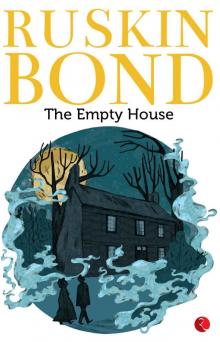 The Empty House
The Empty House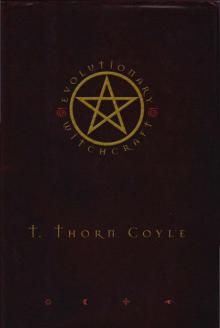 T Thorn Coyle Evolutionary Witchcraft (pdf)
T Thorn Coyle Evolutionary Witchcraft (pdf)![K J Emrick & Kathryn De Winter - [Moonlight Bay Psychic Mystery 01-06] - A Friend in; on the Rocks; Feature Presentation; Manor of; by Chocolate Cake; A-Maze-Ing Death (retail) (epub) Read online](http://freenovelread.comhttps://picture.efrem.net/img/nienyi/k_j_emrick_and_kathryn_de_winter_-_moonlight_bay_psychic_of_by_chocolate_cake_a-maze-ing_death_retail_epub_preview.jpg) K J Emrick & Kathryn De Winter - [Moonlight Bay Psychic Mystery 01-06] - A Friend in; on the Rocks; Feature Presentation; Manor of; by Chocolate Cake; A-Maze-Ing Death (retail) (epub)
K J Emrick & Kathryn De Winter - [Moonlight Bay Psychic Mystery 01-06] - A Friend in; on the Rocks; Feature Presentation; Manor of; by Chocolate Cake; A-Maze-Ing Death (retail) (epub) Next Day of the Condor
Next Day of the Condor Onyx
Onyx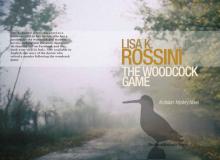 The Woodcock Game: An Italian Mystery Novel
The Woodcock Game: An Italian Mystery Novel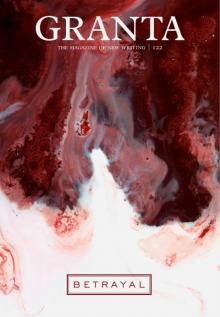 Granta 122: Betrayal (Granta: The Magazine of New Writing)
Granta 122: Betrayal (Granta: The Magazine of New Writing)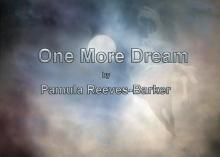 One More Dream
One More Dream Cosa Nostra by Emma Nichols) 16656409 (z-lib.org) (1)-compressed
Cosa Nostra by Emma Nichols) 16656409 (z-lib.org) (1)-compressed Cowboy by J. M. Snyder
Cowboy by J. M. Snyder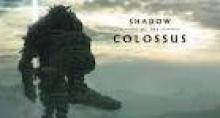 Colossus
Colossus Star Trek - DS9 011 - Devil In The Sky
Star Trek - DS9 011 - Devil In The Sky Fright Mare-Women Write Horror
Fright Mare-Women Write Horror The Future Is Japanese
The Future Is Japanese In the Witching Hour
In the Witching Hour Mammoth Books presents Wang's Carpets
Mammoth Books presents Wang's Carpets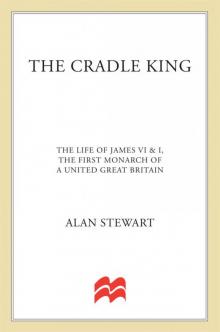 The Cradle King: The Life of James VI and I, the First Monarch of a United Great Britain
The Cradle King: The Life of James VI and I, the First Monarch of a United Great Britain Stalking Moon
Stalking Moon Hostage To The Devil
Hostage To The Devil![Harris, Daisy - Mere Passion [Ocean Shifters 2] (Siren Publishing Classic) Read online](http://i1.bookreadfree.com/i/03/23/harris_daisy_-_mere_passion_ocean_shifters_2_siren_publishing_classic_preview.jpg) Harris, Daisy - Mere Passion [Ocean Shifters 2] (Siren Publishing Classic)
Harris, Daisy - Mere Passion [Ocean Shifters 2] (Siren Publishing Classic) Day, Sunny - Hot in Space (Siren Publishing Ménage and More)
Day, Sunny - Hot in Space (Siren Publishing Ménage and More) Five Books Of The Lives, Heroic Deeds And Sayings Of Gargantua And His Son Pantagruel
Five Books Of The Lives, Heroic Deeds And Sayings Of Gargantua And His Son Pantagruel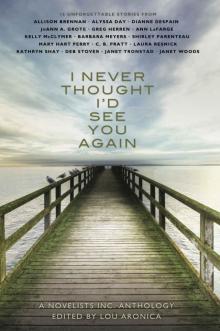 I Never Thought I'd See You Again: A Novelists Inc. Anthology
I Never Thought I'd See You Again: A Novelists Inc. Anthology Billion dollar baby bargain.txt
Billion dollar baby bargain.txt![Chenery, Marisa - Turquoise Eye of Horus [Egyptian Shifters 1] (Siren Publishing Classic) Read online](http://i1.bookreadfree.com/i1/03/26/chenery_marisa_-_turquoise_eye_of_horus_egyptian_shifters_1_siren_publishing_classic_preview.jpg) Chenery, Marisa - Turquoise Eye of Horus [Egyptian Shifters 1] (Siren Publishing Classic)
Chenery, Marisa - Turquoise Eye of Horus [Egyptian Shifters 1] (Siren Publishing Classic) Cat Magic
Cat Magic Star Trek - DS9 - Warped
Star Trek - DS9 - Warped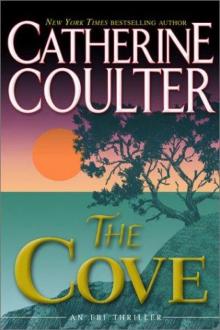 Catherine Coulter - FBI 1 The Cove
Catherine Coulter - FBI 1 The Cove Miranda Lee -The Blackmailed Bridegroom
Miranda Lee -The Blackmailed Bridegroom The Seashell Anthology of Great Poetry
The Seashell Anthology of Great Poetry Dragon Moon
Dragon Moon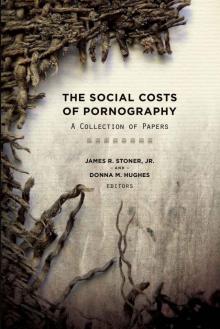 The Social Costs of Pornography: A Collection of Papers
The Social Costs of Pornography: A Collection of Papers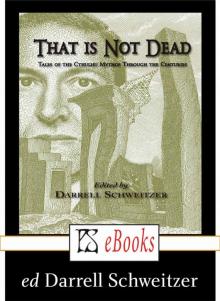 That Is Not Dead
That Is Not Dead Best New Horror: Volume 25 (Mammoth Book of Best New Horror)
Best New Horror: Volume 25 (Mammoth Book of Best New Horror) This Christmas by J. M. Snyder
This Christmas by J. M. Snyder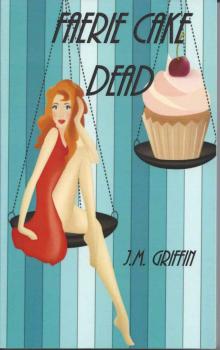 Faerie Cake Dead
Faerie Cake Dead CS-Dante's Twins
CS-Dante's Twins EFD1: Starship Goodwords (EFD Anthology Series from Carrick Publishing)
EFD1: Starship Goodwords (EFD Anthology Series from Carrick Publishing) Echo Burning by Lee Child
Echo Burning by Lee Child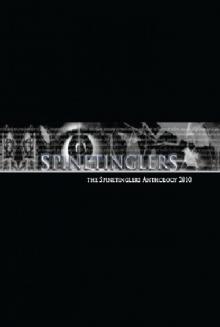 The Spinetinglers Anthology 2010
The Spinetinglers Anthology 2010 Wild Hearts
Wild Hearts Violet Winspear - Sinner ...
Violet Winspear - Sinner ...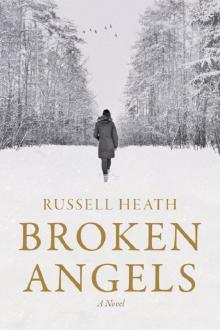 Broken Angels
Broken Angels FearNoEvil
FearNoEvil![Santiago, Lara - Range War Bride [Tasty Treats 11] (Siren Publishing PolyAmour) Read online](http://i1.bookreadfree.com/i1/03/30/santiago_lara_-_range_war_bride_tasty_treats_11_siren_publishing_polyamour_preview.jpg) Santiago, Lara - Range War Bride [Tasty Treats 11] (Siren Publishing PolyAmour)
Santiago, Lara - Range War Bride [Tasty Treats 11] (Siren Publishing PolyAmour) 8 Great Hebrew Short Novels
8 Great Hebrew Short Novels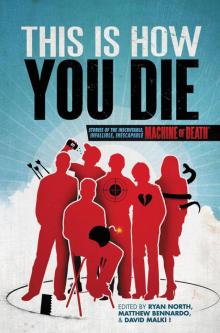 This Is How You Die: Stories of the Inscrutable, Infallible, Inescapable Machine of Death
This Is How You Die: Stories of the Inscrutable, Infallible, Inescapable Machine of Death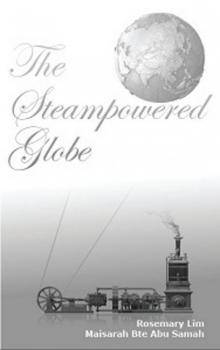 The Steampowered Globe
The Steampowered Globe While We Wait by J. M. Snyder
While We Wait by J. M. Snyder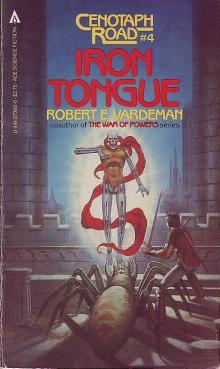 Iron Tongue cr-4
Iron Tongue cr-4![Stieg Larsson [Millennium 02] The Girl Who Played with Fire v5.0 (LIT) Read online](http://i1.bookreadfree.com/i1/03/31/stieg_larsson_millennium_02_the_girl_who_played_with_fire_v5_0_lit_preview.jpg) Stieg Larsson [Millennium 02] The Girl Who Played with Fire v5.0 (LIT)
Stieg Larsson [Millennium 02] The Girl Who Played with Fire v5.0 (LIT)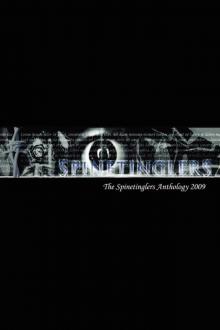 The Spinetinglers Anthology 2009
The Spinetinglers Anthology 2009 Bowles, Jan - Branded by the Texas Rancher (Siren Publishing Classic)
Bowles, Jan - Branded by the Texas Rancher (Siren Publishing Classic) Brown, Berengaria - Vivienne's Vacation (Siren Publishing Ménage and More)
Brown, Berengaria - Vivienne's Vacation (Siren Publishing Ménage and More) Inheritors
Inheritors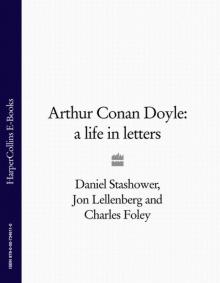 Arthur Conan Doyle: A Life in Letters
Arthur Conan Doyle: A Life in Letters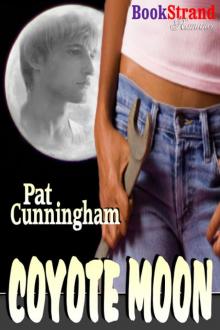 Cunningham, Pat - Coyote Moon (BookStrand Publishing Romance)
Cunningham, Pat - Coyote Moon (BookStrand Publishing Romance)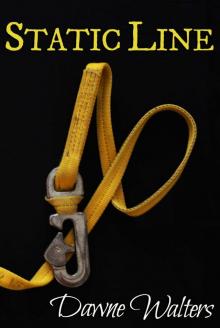 Static Line
Static Line Ghost Mysteries & Sassy Witches (Cozy Mystery Multi-Novel Anthology)
Ghost Mysteries & Sassy Witches (Cozy Mystery Multi-Novel Anthology) Elizabeth Neff Walker - Puppy Love
Elizabeth Neff Walker - Puppy Love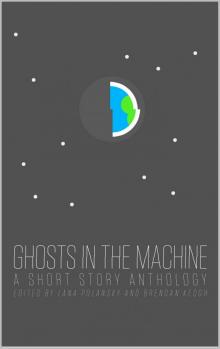 Ghosts in the Machine
Ghosts in the Machine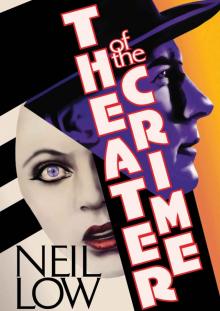 Theater of the Crime (Alan Stewart and Vera Deward Murder Mysteries Book 6)
Theater of the Crime (Alan Stewart and Vera Deward Murder Mysteries Book 6) Red Satin Lips, Book One (The Surrender Series)
Red Satin Lips, Book One (The Surrender Series)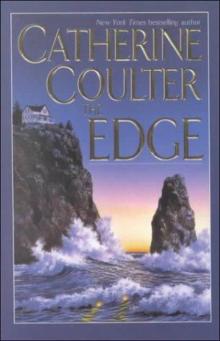 Catherine Coulter - FBI 4 The Edge
Catherine Coulter - FBI 4 The Edge StateoftheUnion
StateoftheUnion Fantastic Women: 18 Tales of the Surreal and the Sublime from Tin House
Fantastic Women: 18 Tales of the Surreal and the Sublime from Tin House Sara Wood-Expectant Mistress original
Sara Wood-Expectant Mistress original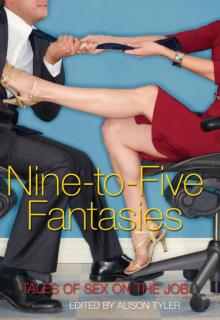 Nine-to-Five Fantasies: Tales of Sex on the Job
Nine-to-Five Fantasies: Tales of Sex on the Job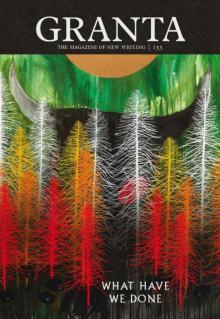 Granta 133
Granta 133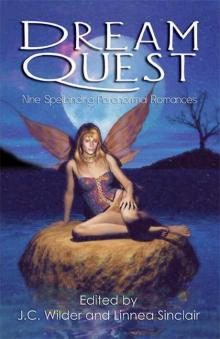 Dream Quest
Dream Quest The Warlock in Spite of Himself wisoh-2
The Warlock in Spite of Himself wisoh-2 Glenn, Stormy - Mating Heat (Siren Publishing Ménage Amour)
Glenn, Stormy - Mating Heat (Siren Publishing Ménage Amour) Davis, Lexie - Toys from Santa (Siren Publishing Classic)
Davis, Lexie - Toys from Santa (Siren Publishing Classic) Once Dead, Twice Shy
Once Dead, Twice Shy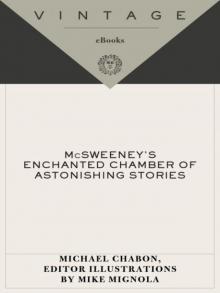 McSweeney's Enchanted Chamber of Astonishing Stories
McSweeney's Enchanted Chamber of Astonishing Stories Zombies: Shambling Through the Ages
Zombies: Shambling Through the Ages Baghdad Without a Map
Baghdad Without a Map Banshee Cries (the walker papers)
Banshee Cries (the walker papers) Fire and Fog cr-5
Fire and Fog cr-5 The Twelve Hot Days of Christmas
The Twelve Hot Days of Christmas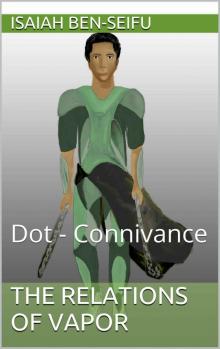 The Relations of Vapor: Dot - Connivance
The Relations of Vapor: Dot - Connivance![Harris, Daisy - Mere Temptation [Ocean Shifters 1] (Siren Publishing Classic) Read online](http://i1.bookreadfree.com/i2/04/11/harris_daisy_-_mere_temptation_ocean_shifters_1_siren_publishing_classic_preview.jpg) Harris, Daisy - Mere Temptation [Ocean Shifters 1] (Siren Publishing Classic)
Harris, Daisy - Mere Temptation [Ocean Shifters 1] (Siren Publishing Classic) World of Mazes cr-3
World of Mazes cr-3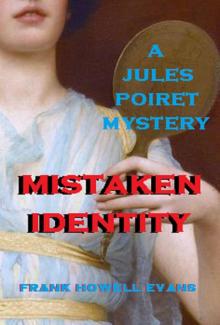 Mistaken Identity (A Jules Poiret Mystery Book 26)
Mistaken Identity (A Jules Poiret Mystery Book 26) Star Trek - DS9 - Fall of Terok Nor
Star Trek - DS9 - Fall of Terok Nor Not Like I'm Jealous or Anything: The Jealousy Book (Ruby Oliver)
Not Like I'm Jealous or Anything: The Jealousy Book (Ruby Oliver) Skaterboy by J. M. Snyder
Skaterboy by J. M. Snyder The Sorcerer_s Skull cr-2
The Sorcerer_s Skull cr-2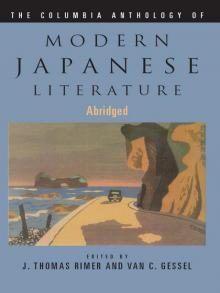 The Columbia Anthology of Modern Japanese Literature (Modern Asian Literature Series)
The Columbia Anthology of Modern Japanese Literature (Modern Asian Literature Series) New Erotica 5
New Erotica 5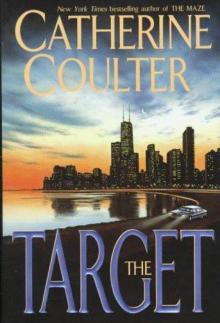 Catherine Coulter - FBI 3 The Target
Catherine Coulter - FBI 3 The Target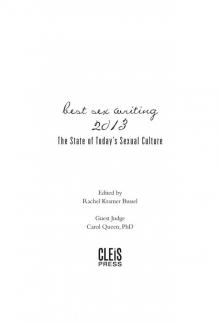 Best Sex Writing 2013: The State of Today's Sexual Culture
Best Sex Writing 2013: The State of Today's Sexual Culture Factoring Humanity
Factoring Humanity Huia Short Stories 11
Huia Short Stories 11 Call of the Wilds
Call of the Wilds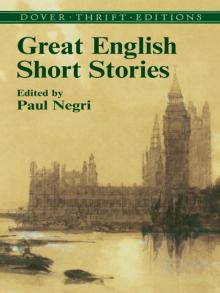 Great English Short Stories (Dover Thrift Editions)
Great English Short Stories (Dover Thrift Editions)![Ramagos, Tonya - Logan's Lessons [Sunset Cowboys 2] (Siren Publishing Classic) Read online](http://i1.bookreadfree.com/i2/04/10/ramagos_tonya_-_logans_lessons_sunset_cowboys_2_siren_publishing_classic_preview.jpg) Ramagos, Tonya - Logan's Lessons [Sunset Cowboys 2] (Siren Publishing Classic)
Ramagos, Tonya - Logan's Lessons [Sunset Cowboys 2] (Siren Publishing Classic)![Morgan, Nicole - Sweet Redemption [Sweet Awakenings 1] (Siren Publishing Allure) Read online](http://i1.bookreadfree.com/i2/04/10/morgan_nicole_-_sweet_redemption_sweet_awakenings_1_siren_publishing_allure_preview.jpg) Morgan, Nicole - Sweet Redemption [Sweet Awakenings 1] (Siren Publishing Allure)
Morgan, Nicole - Sweet Redemption [Sweet Awakenings 1] (Siren Publishing Allure) Warbirds of Mars: Stories of the Fight!
Warbirds of Mars: Stories of the Fight! Original Version of Edited Godwin Stories(lit)
Original Version of Edited Godwin Stories(lit) Where The Hell is Boulevard?
Where The Hell is Boulevard?![Chemical [se]X Read online](http://i1.bookreadfree.com/i2/04/13/chemical_sex_preview.jpg) Chemical [se]X
Chemical [se]X Allison Brennan - See No Evil
Allison Brennan - See No Evil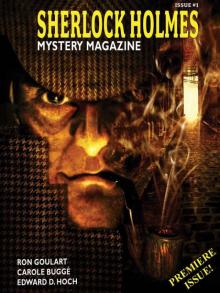 Sherlock Holmes Mystery Magazine #1
Sherlock Holmes Mystery Magazine #1